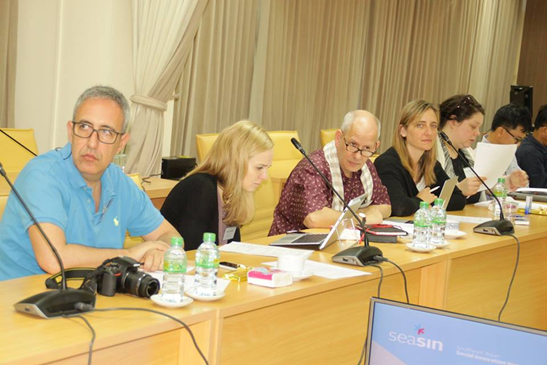
Kasetsart University Social Innovation Support Unit Visit by Social Innovation in Southeast Asia Project partners and MOU signing between the Faculty of Social Sciences and TSIS Partnership Ltd., 22 March 2018, Faculty of Social Sciences.
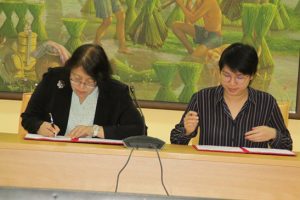
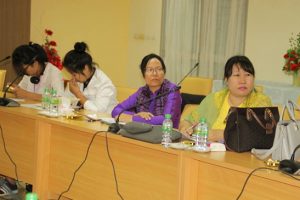
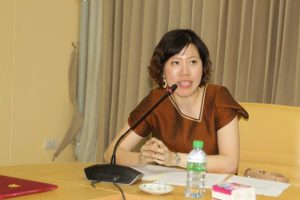

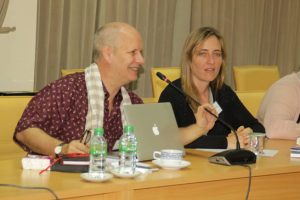


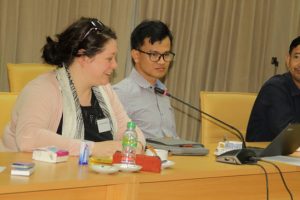
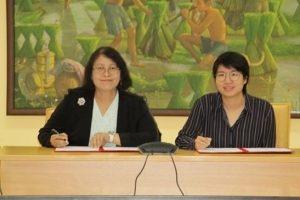
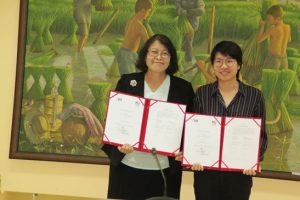











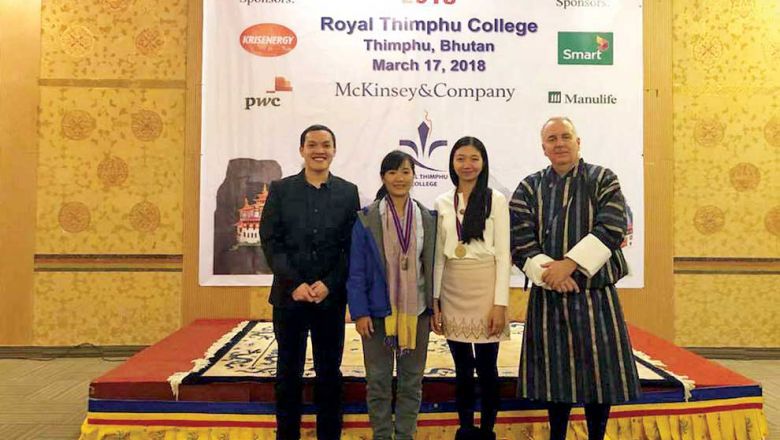
Eco-Plastic aims to transform landfills into roadfills by using plastic waste added into the conventional asphalt concrete making the roads last long, stronger, and cheaper than the traditional road pavement material. A duo of female Cambodia, Sokanha Ly who is senior in Civil Engineering at Zaman University and Bunhourn Tang who is a senior in Business Adminstration at American University of Phnom Penh, believed that plastic waste is a curse to the environment, to and to the economy and people face a high risk driving on roads in Cambodial which are often poorly constructed and damaged by high traffic. By establishing Eco-Plastic, they will be able to use plastic waste to improved roads, and transforming landfil waste into a roadfill product. They are the silver medal winner of BMC Cambodia 2018 and also the 2nd winner of Regional Mekong Challenge in Bhutan.
Read more about Eco-Plastic: https://www.phnompenhpost.com/business/cambodian-duos-eco-plastic-takes-second-bhutan-startup-challenge
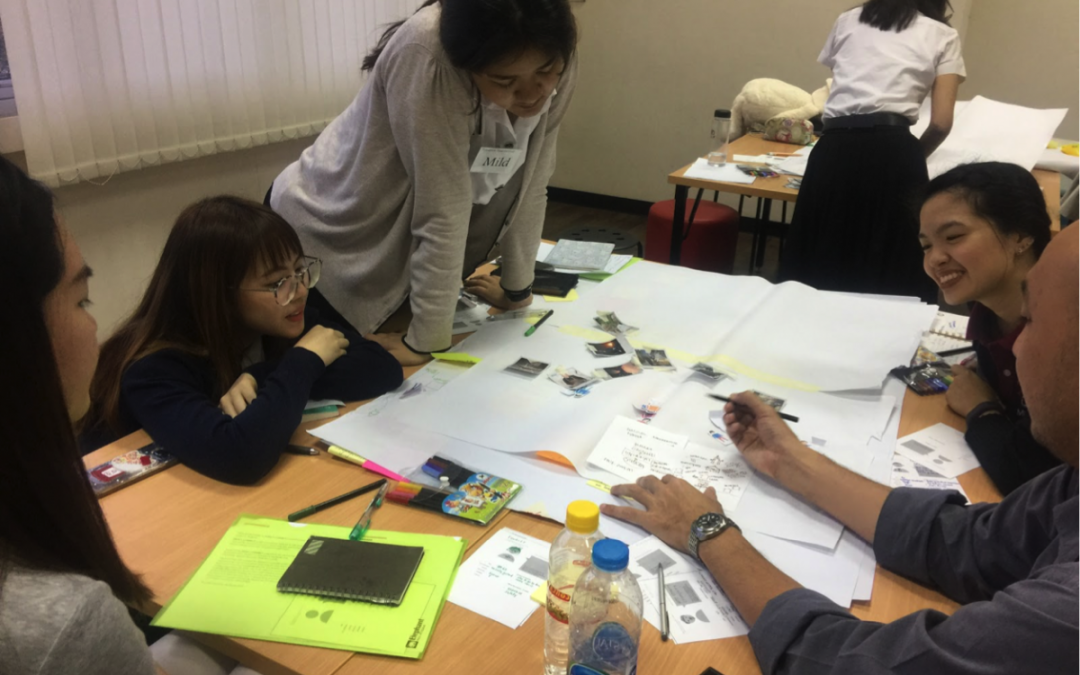
By So Jung Rim and Julie Munk
“There is no people power in this country”
Participant during the social innovation workshop in Myanmar
The above quote is rather representative of our recent experience of running social innovation training workshops and meeting young students in South East Asia. Another participant in Myanmar used an analogy to express the frustration he felt. “We are like frogs in a cup. Frogs can normally jump high, but if you keep them inside a cup with a lid on, they get used to jumping only as high as the cup will allow them. Even if the lid is removed later, the frog won’t jump higher than the height of the cup.”
In Thailand, similar sentiments were expressed by young people. ‘Young people don’t have freedom here. We are restricted by what the society think young people should do and what our parents think we should do. We are not allowed to think for ourselves and make choices about our career and lives.’
These honest thoughts and frustrations shared by participants at two recent SIX facilitated social innovation events in Myanmar and Thailand made us think about the link between agency and structure in a social change process: What does it take for social innovation to flourish in a society? Where does change start? Is it about capacity of individuals to act? Or do social structures determine what we can do?
Enabling social innovation does not only raise questions and needs for shared insights and knowledge. It is not only a question of access to best practice stories and tools. For social innovation to flourish, systems have to be open, whilst practice and tools have to be embedded within individuals. Both aspects of this hold equal importance and are always interlinked.
What we see when working with contexts, cultures and systems like those in Myanmar and Thailand, the mindset of a social innovation isn’t systematically supported and celebrated as a human and individual skill. Likewise shifting systems where difference is not valued and failure is not tolerated can require enormous individual courage.
However despite these factors, during the process of this 2-day SEASIN Social Innovation Studio workshop, we saw amazing team work where diverse participants (students and practitioners) discussed, imagined and collaborated to craft potential solutions to social challenges they face,This provided evidence and experience of how knowledge, emotions and power to drive social change can be hidden and almost suppressed within individuals.

The use of design principles, such as role play and scenario building based on user-centred ethnography around real-life challenges, can help as techniques to open up for insights and knowledge that are otherwise hidden. It is easier to ‘play it out’ when you are given imaginary realities and when you are in a safe space in which you can articulate observed and identified problems.
Universities hold a key role in enabling these kind of safe spaces for ideation and problem solving around social complexity. Not only with activities like the studios but also in everyday practice. Universities are able to provide these spaces and imaginary worlds where individuals can build agency and feel empowered to implement social innovation practice within the system they are part of.
This article was originally published on the Social Innovation Exchange website.
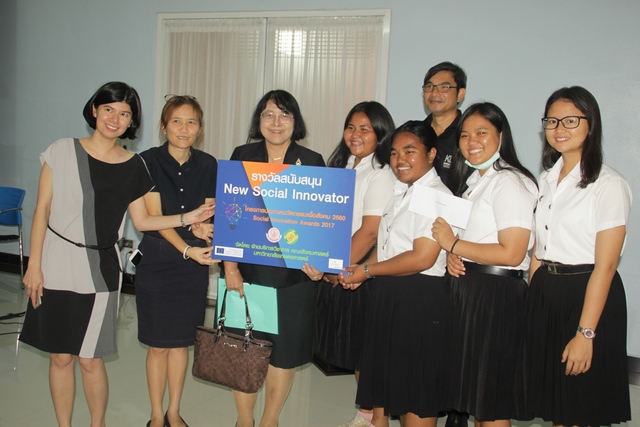
Recent Comments